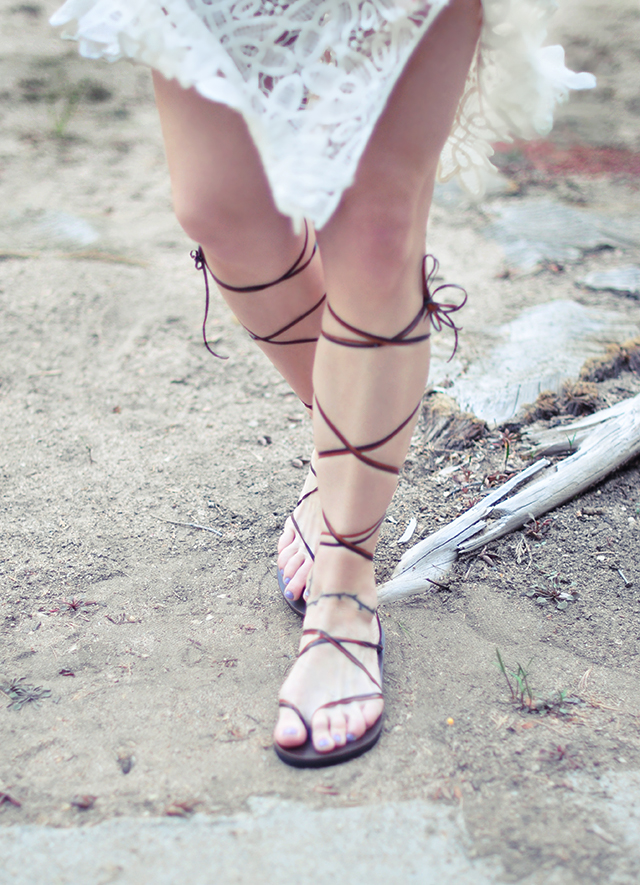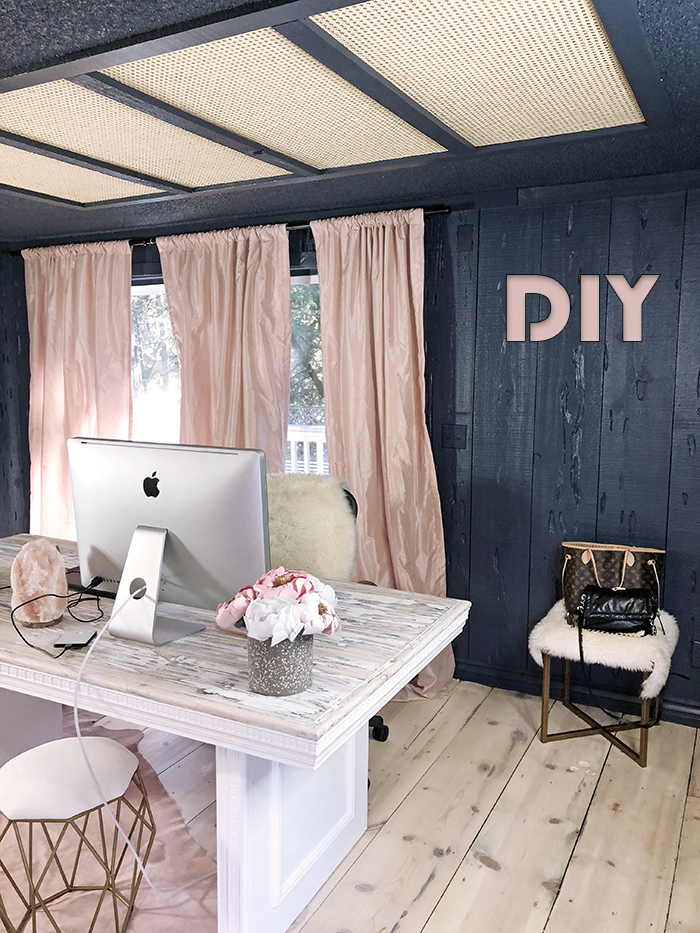
The ceiling on this side is dropped with recessed boxed fluorescent lighting fixtures and flanked with a popcorn textured finish. The other side of the space had them too but they were built in a box that hung down from the ceiling so we were able to remove them easily. On this side though, the only way to remove them would have been to demo the entire ceiling and re-drywall the space. And while I would have loved that, I didn’t want the cost or extra time spent on that project.
As much as I hate textured ceilings, my idea to paint this side in the same color as the walls (Behr Marquee Midnight Blue) really helped give the texture a cool look that didn’t make the space feel smaller, as I worried it might. We painted the wood frame surrounding the fluorescent light fixtures as well so it’s all seamless.
But then there was the issue of the hideous plastic panels that conceal the lights and recessed box behind them. (PS. They’re called troffer light panels or troffer lights)
When looking to replace them, I was mortified. The only options are all pretty horrible and reminded me of an old corporate office space full of cubicles. Why aren’t there other solutions or options for this kind of lighting? I was on a mission to find a solution to this problem that was not only visually pleasing, but also created some sort of insulated barrier between the upstairs flooring and my downstairs ceiling and lastly, they had to be removable to be able to change the bulbs.
I thought about draping fabric in the space, which would have been pretty and added a romantic touch, but wouldn’t help with insulation. Then I tried to come up with a DIY to upgrade the panels I already had into something better but it would have resulted in me just basically covering them up and then no light would be able to get through.
AND THEN IT CAME TO ME… natural woven cane webbing was the perfect solution for all of my problems that would also create a fun and unique look that worked with my space as well. The natural color of the cane matches my new light wood floors while also working with my Old World Meets Contemporary vibe I was going for.
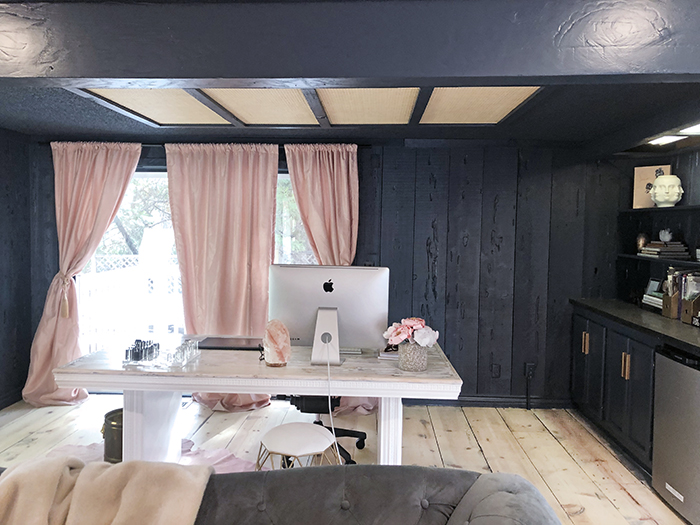
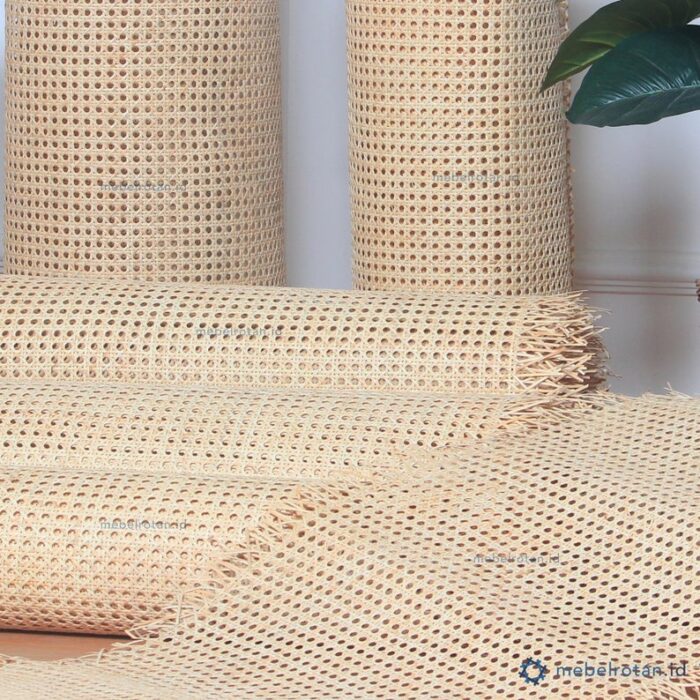
A little cane history…
Though this woven cane has been popularized in contemporary furniture since the 1960s and always reminds me of the ’80s and the Cesca Chair, its roots go back centuries.
Cane work is a form of basketry that has been used in furniture for thousands of years. It has been dated back to Ancient China. Archeologists have discovered caned chairs in Egyptian tombs dating to 1300 B.C. Caned bottom chairs were popular in Europe around the 17th and early 18th Centuries. More affluent people purchased chairs with caned seat bottoms. In America, the common folks had chairs with solid wood seats or seats made from rush or cattails. Many would make their own chairs and then weave their own cattail seats.
* Side note: you can see many cane backed chairs in the new Bridgerton series on Netflix. A detail I couldn’t help noticing since cane has been on my mind so frequently lately.
* Watch how cane webbing is made in this video: history of cane webbing
More resources: History of Chair Caning // Wicker Rattan Retrospect // Patterns of Distinction of the Caned Chair
Here’s what the ceiling looked like before…
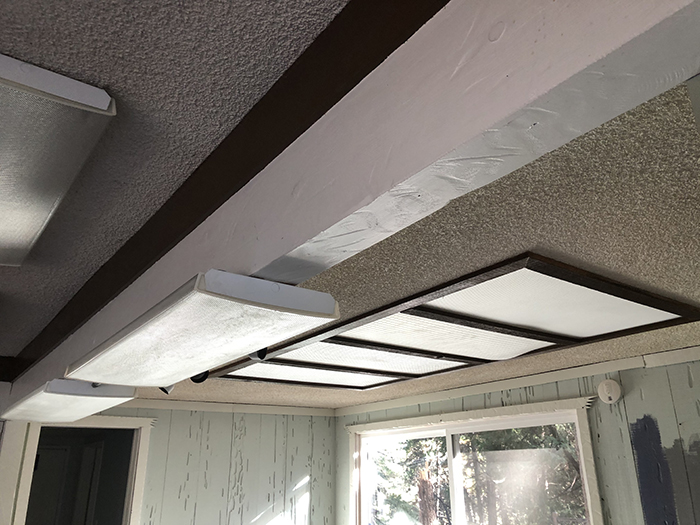

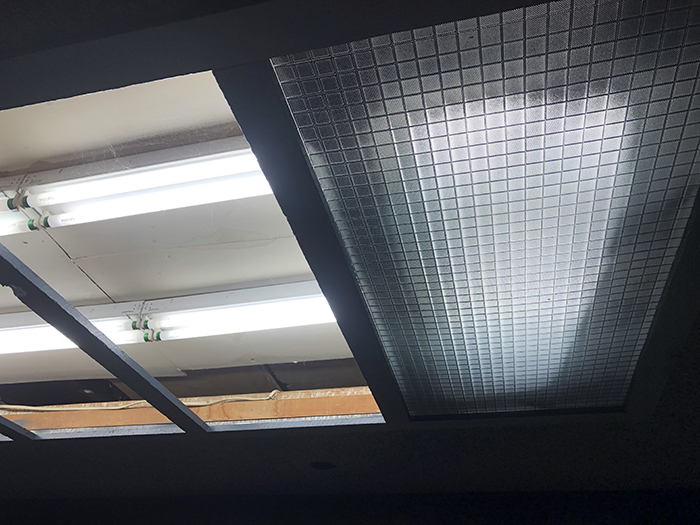
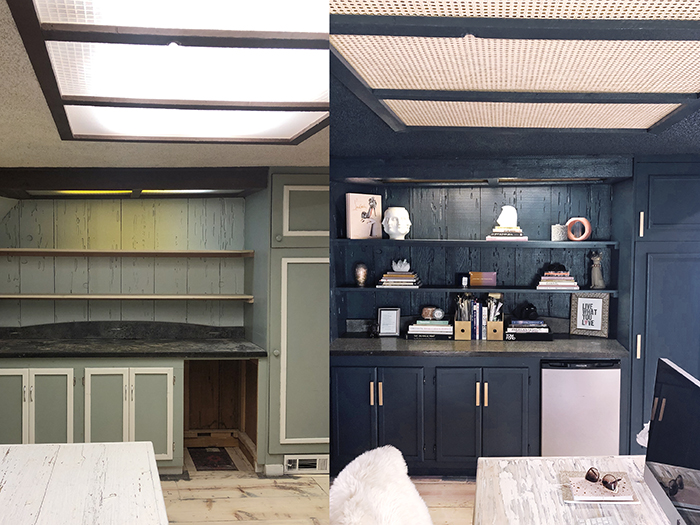
The project was not cheap, but it cost about as much as it would have if I were to purchase a nice light fixture for the space so it was worth it to not have to look at the plastic panels that as far as I could tell, were my only pre-made option.
I found woven cane on amazon and etsy, but they only sold small sections or by the yard and it was expensive. Finally after searching for awhile, I found a basket store based in LA called Cane and Basket that also does online orders and was far more budget friendly for the amount of cane webbing I needed, which was about 17′ and in fact, I had enough to finish the four panels we created over my desk.
Two things…
1. The light does not scatter through the holes and create a dotted look all over, which was a concern at first, but they definitely needed a backing not only to prevent being able to look right up into the fluorescent lights, but it helps diffuse the light as well as add a little insulation.
2. I know this is not a DIY project for everyone, but it’s an option that didn’t otherwise exist, so I thought I’d share anyway in case it could be an option for someone or inspire some other creative options that will work for you.
Luckily I have Chad, who can build anything, and he made them for me. They’re not super difficult, but having all the tools made it much easier. I would have figured out a way to do them myself, but he did a far better job than I would have.
So let’s get to the DIY…
Here’s What We Used…

* Redi-shade white Fabric arched window shade $20 used as backing and found at Home Depot. We’ve used these in our arched window in our master bedroom. It can be stretched straight, which is why it worked for this. We needed 2 to get four panels backed.
* 1″ x 1″ square stock wood
* Wood glue (optional)
* Nail gun
* Staple gun
* Measuring tape
Steps…
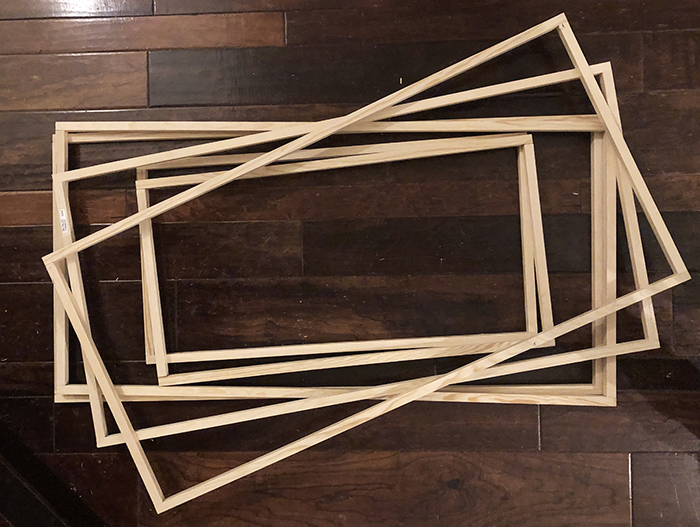
NOTE: If you need more stabilization, add an extra bar in the center of your frames.
NOTE: the two little frames you see in the photo above are for the soffit light above the shelves in my office and we ran out of cane to finish them. I might just use the backing for that area since it’s not super visible, or I’ll buy more cane. We’ll see.
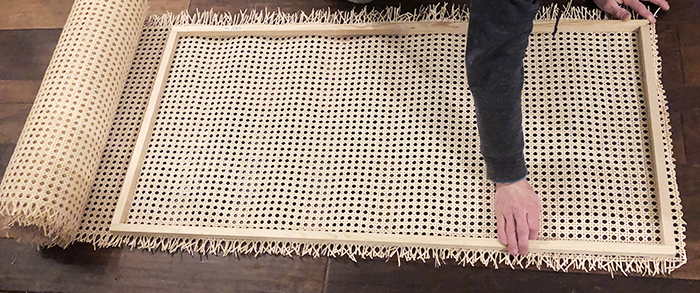
I bought a roll of cane that was 24″ wide knowing that we’d have an inch or so on each side overlap without having to cut the sides down too much.
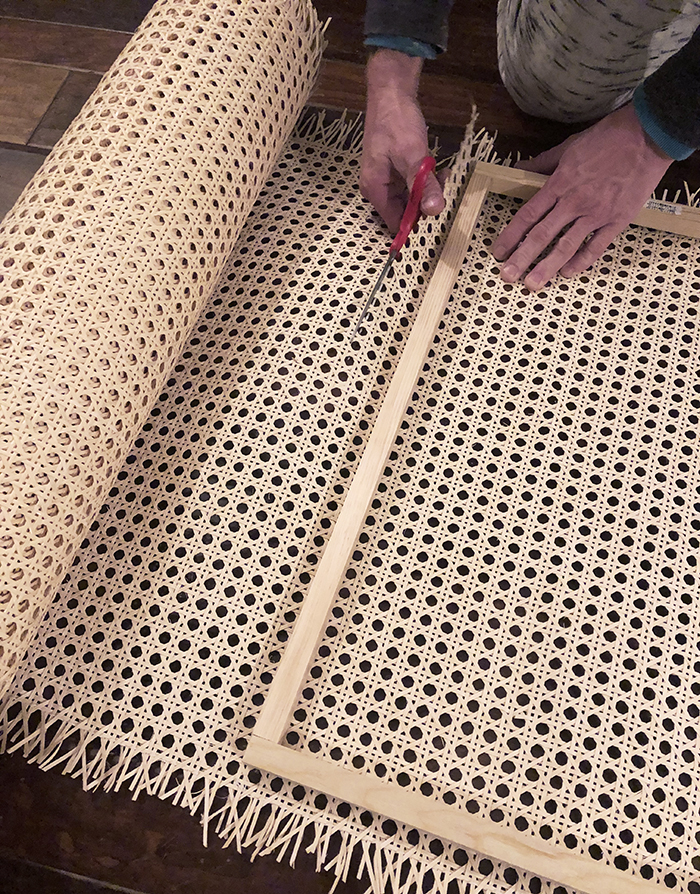

We dropped the 4 sections in the tub to soak in warm water for about 30 minutes, pulling the next one out to drip dry as we finished the one prior.
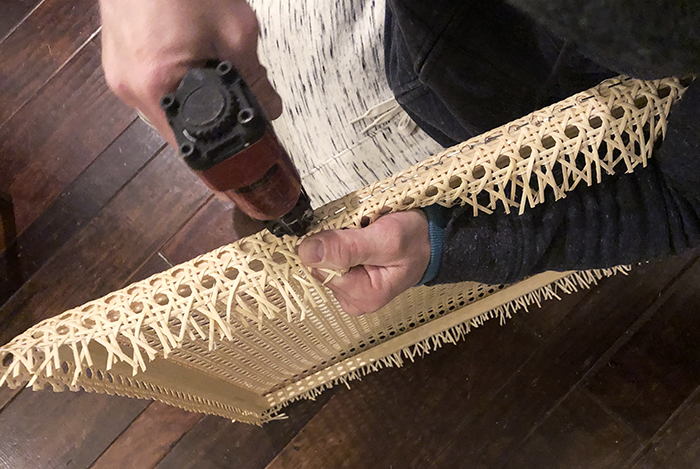
NOTE: On our first panel, we pulled the cane too tightly, don’t make this mistake. It ended up bowing the sides of the wood frame and once it dried completely the next day, there was nothing we could really do about it. It still worked, but one of the panels is a tiny bit off, but you can’t tell.
You need to pull the weave, so it’s taught, but not like you would if you were reupholstering a chair, per se, no one is going to be sitting on these 🙂
Once all sides are stapled and secure, cut off the excess with a razor blade or scissors.
Backing…
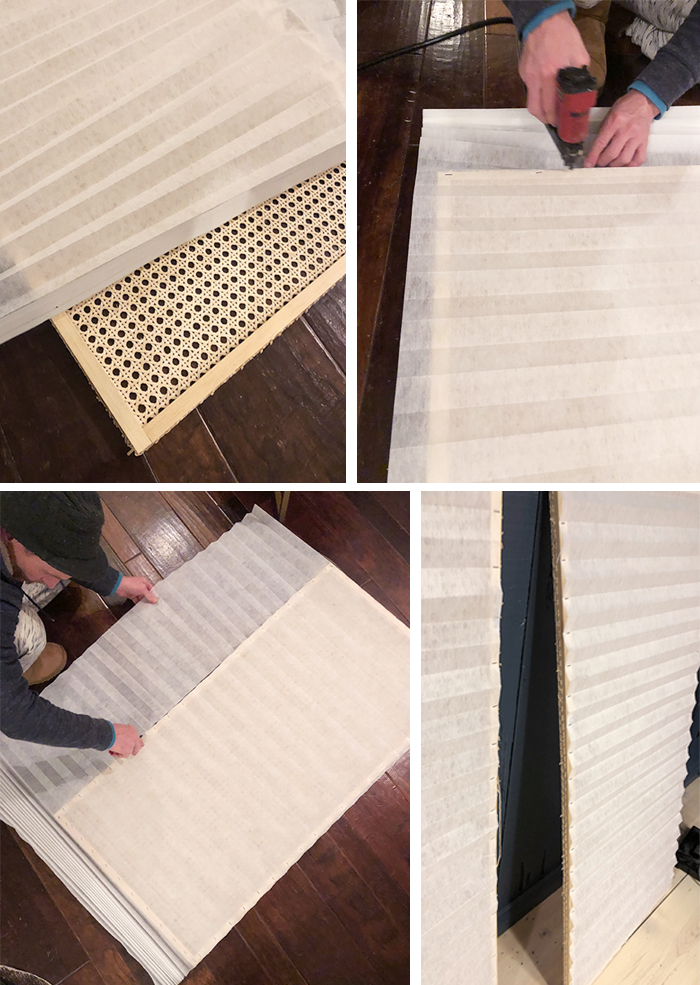
Installation…
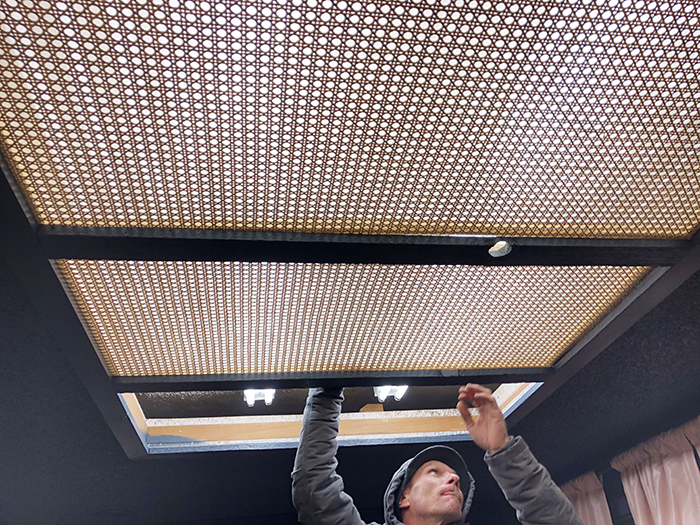

They’re easy to remove one or two to change the bulbs out when needed.
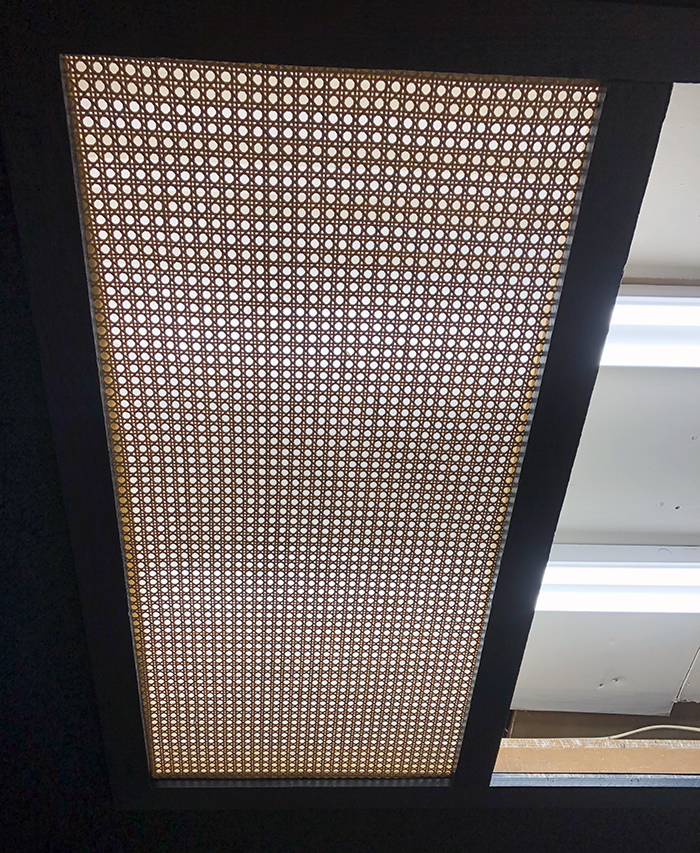

I am IN LOVE with the way they look!
And… Voila!
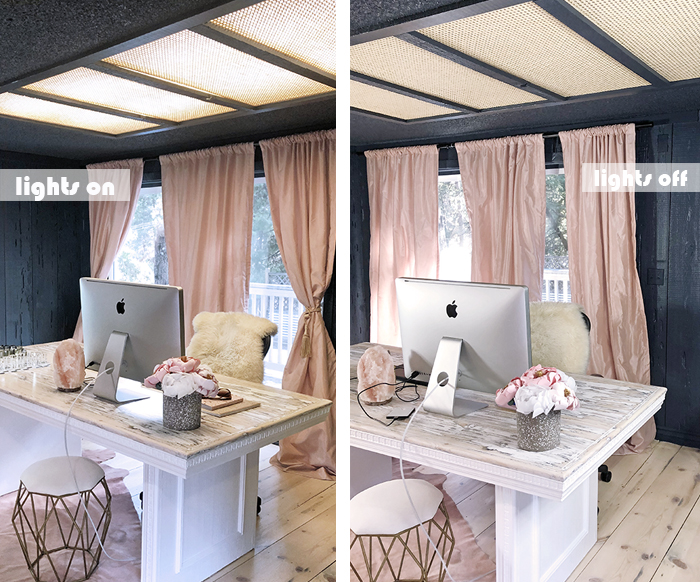
I keep them off while I’m working on my computer because of the glare (and the window behind me), but they still produce enough light to brighten up the entire room. I was more concerned with the way they looked so if they didn’t produce enough light, I would have just brought a few lamps in the space to make it work.
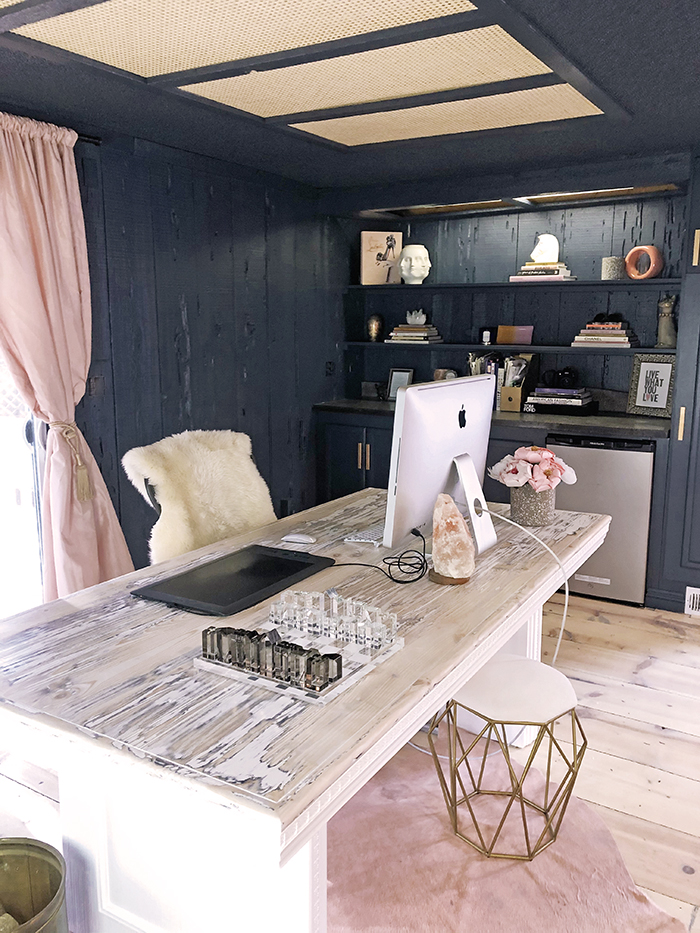

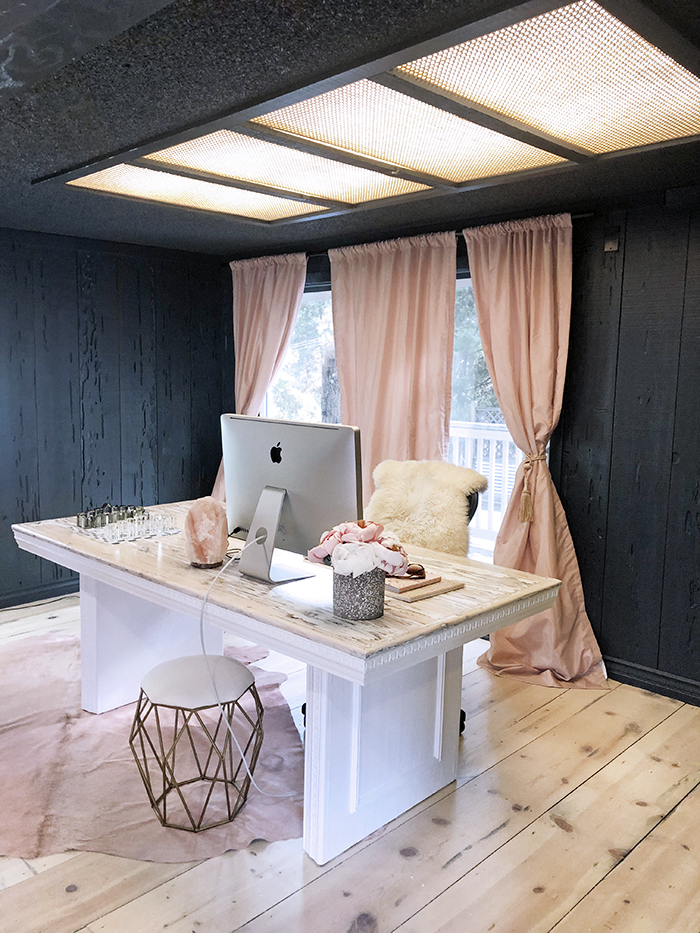
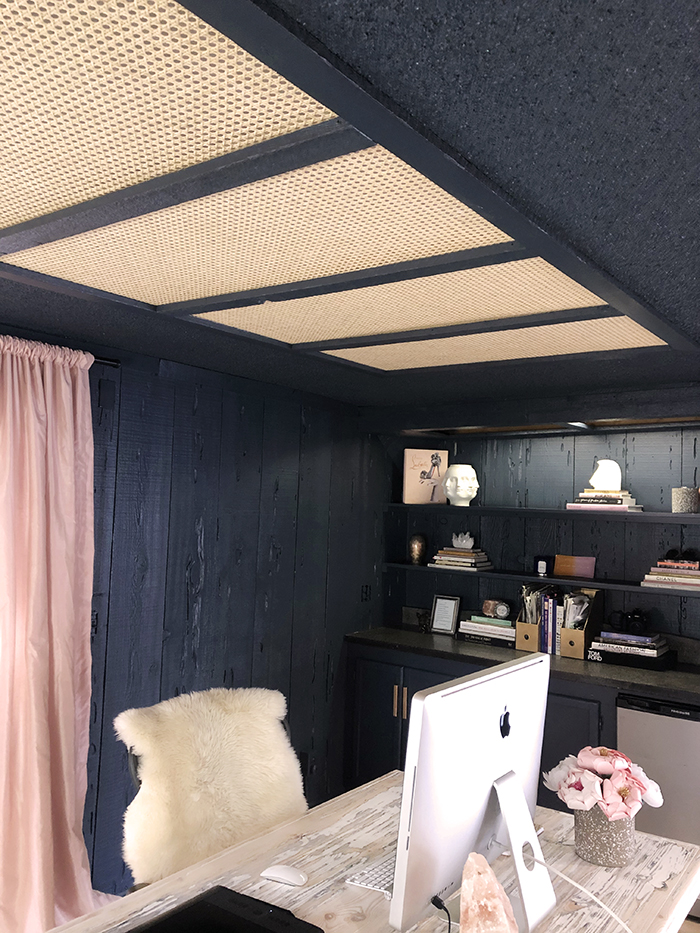
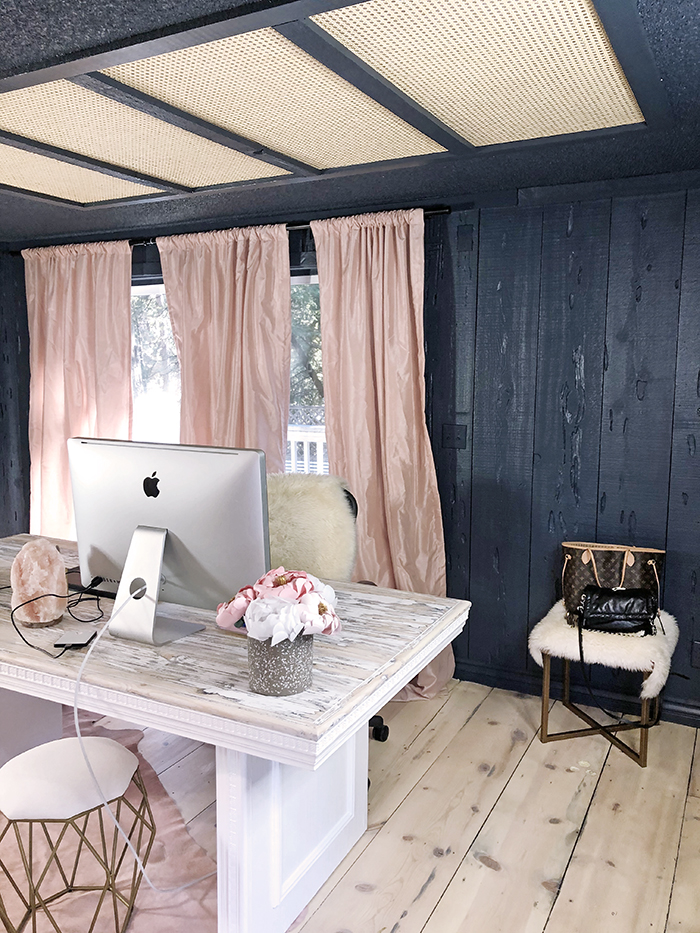
Happy DIYing Lovecats!
And Happy Monday too!
* Find all my DIYs here
* Find all my A-Frame Office Renovation posts here


